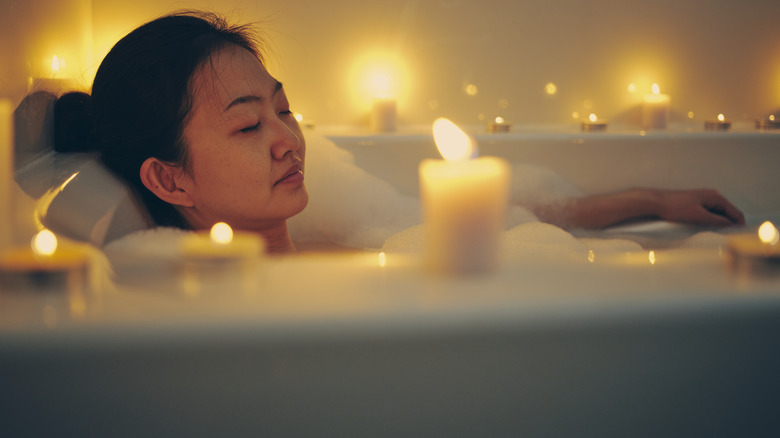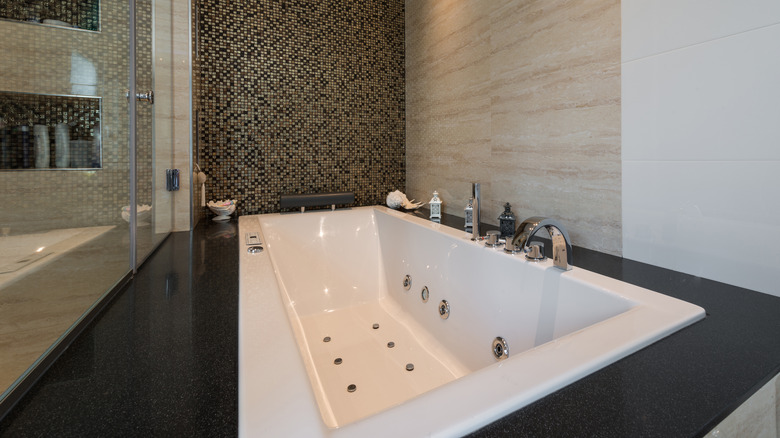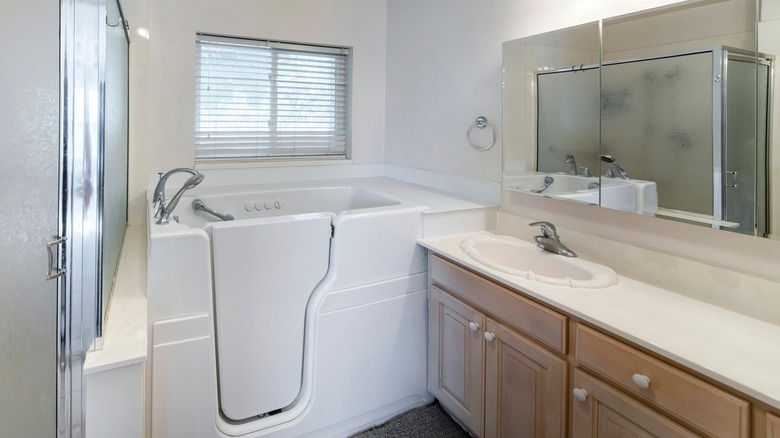How To Choose The Right Bathtub Style For Your Bathroom
A bathtub is more than a thing you slip into to relax or wash the day away. It can be the centerpiece of your bathroom, setting the tone and tying together a style as unique as its occupant. However, choosing the right one isn't just a matter of selecting a showroom stunner. Instead, to make the best choice, consider how the bathtub will function once installed and how it will age with you. This requires considering several factors, including its size, shape, weight, installation requirements, materials, and price.
Those looking to remodel a bathroom may only have a few options. Most freestanding models, for example, require specialized pipe work. Plus, such a design probably isn't ideal in a small bathroom. Instead, an alcove tub is likely the better option for small spaces, as it is designed to fit snugly between three walls. It can also easily accommodate a shower as a second bathing option.
On the other hand, a new construction job has abundant opportunities. For example, you can design the entire bathroom around the tub of your dreams, be it a Japanese soaking model, a clawfoot, or a luxurious custom copper tub. With a drop-in model, you can even integrate the design of your bathroom by using the same tile or a complimentary option. Just be aware that this choice may require more carpentry work and higher labor costs.
Study a bathtub's specifications
A bathtub's size, shape, material, and functions will significantly impact its price. Fiberglass or acrylic tubs will cost less than those made of cast iron or marble, while a custom copper or wood design will likely surpass them all. Perhaps you want to install a luxurious jetted model in the corner of your bathroom. Yes, your body will thank you for the hydro-massage, but your bank account may not be keen on the long-term price of such luxury. Corner models typically have larger basins and must be filled pretty high to get the jets going. Plus, you'll be using electricity — such features inevitably lead to higher utility bills.
A bathtub's specifications also play a vital role in selecting the right option for your space. Even the sturdiest bathroom floors will succumb to the right amount of pressure. Let's say you treat yourself to a beautiful cast iron whirlpool tub that holds 52 gallons of water. The tub alone will weigh close to 400 pounds, and every gallon of water poured inside will add another 8 pounds. Even if you don't fill it to capacity, you're still looking at an additional 250 pounds of water weight. When you slide into a piping-hot bubble bath, your floor will support between 800 and 1,000 pounds. That's not something you want to test, so you'll need to know if a reinforced floor is necessary.
Consider your lifestyle
Your current and future lifestyle is also an essential factor to consider when choosing a bathtub. Individuals who live a very active life (or those with a severe case of arthritis) may want to invest in a soaking tub or something capable of an air or jet massage for the hydrotherapy benefits. A walk-in bathtub is an excellent solution to a mobility problem, whether you're living with the issue yourself or caring for someone else. Even if you're physically able to swing over the side of a bathtub now, we all have to transition into the "senior adult" category eventually. Thus, it may be wise to look ahead when a bathroom resides in your forever home.
It's important to consider all the potential users of a bath. Those placed in guest bathrooms or used by children are often better when combined with a shower. Such a thought would nix freestanding and certain corner tubs from your list of options. Of course, it's possible to convert a bathtub into a shower, but you can avoid that future cost by planning ahead the first time.


